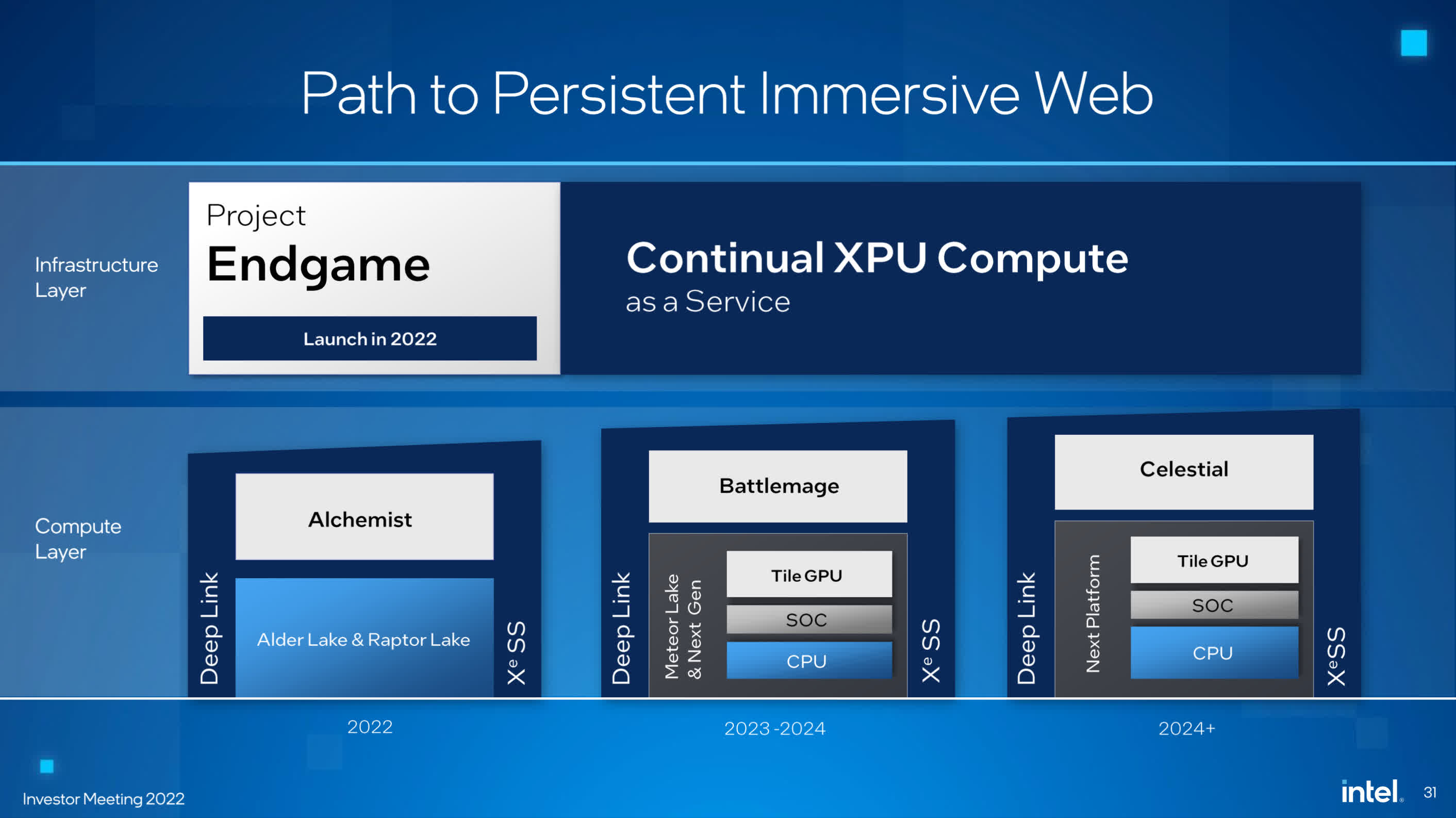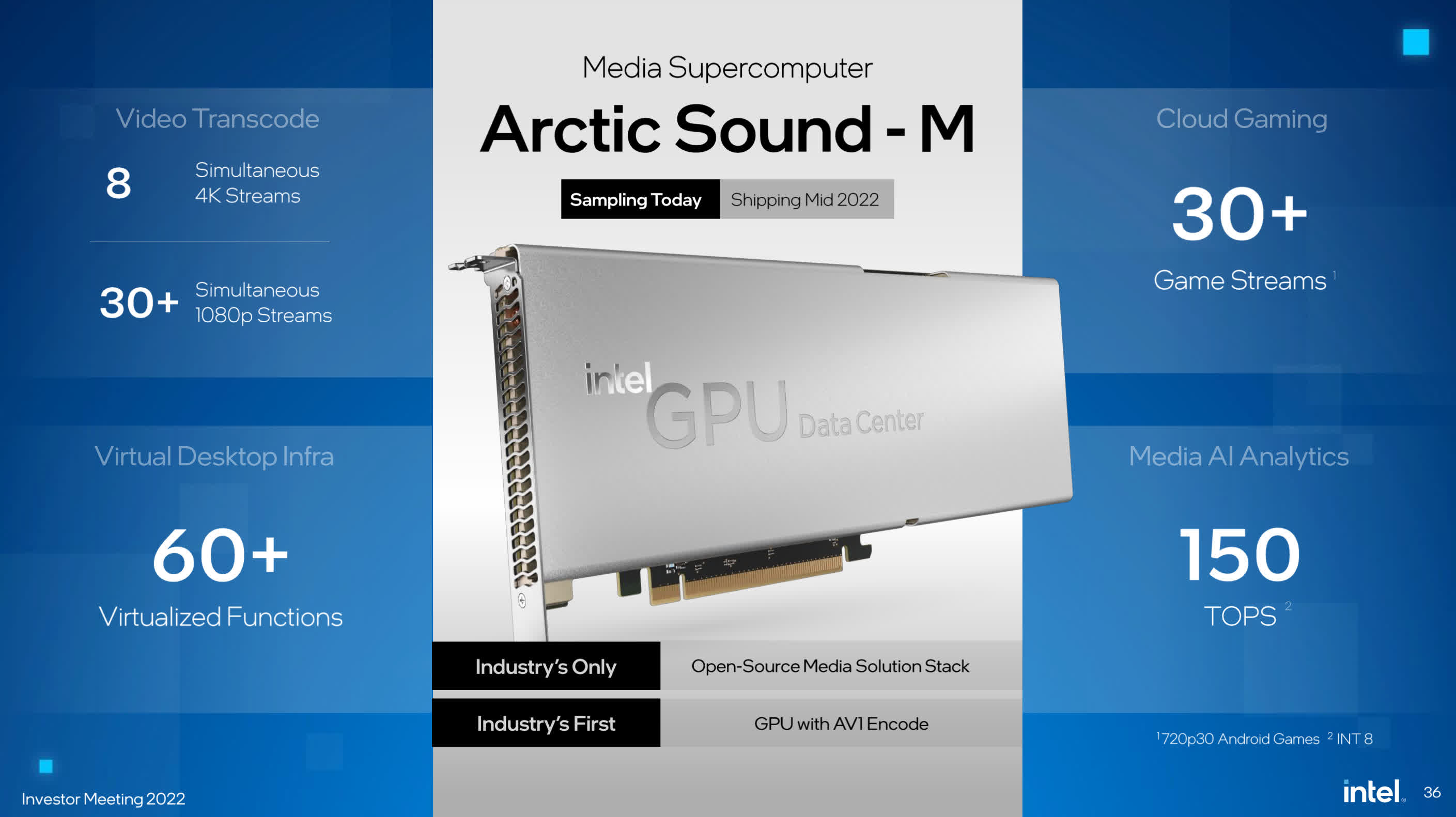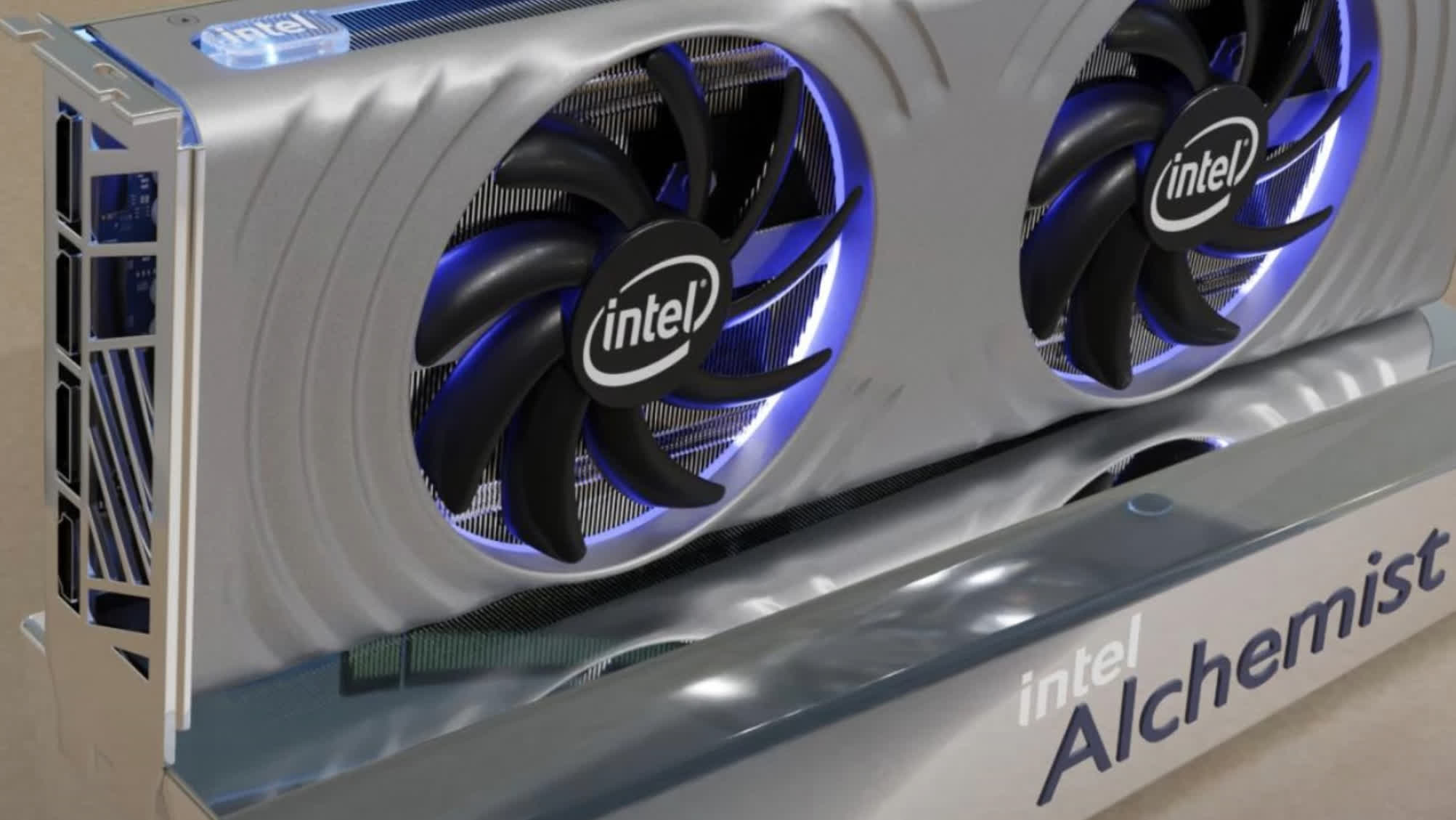Why it matters: Intel is getting ready to release the first wave of Arc GPUs, which will land on upcoming laptops alongside 12th generation Alder Lake H-series CPUs. The company has high ambitions for the future of its graphics business, but it probably won't have a significant impact on the overall GPU pricing and availability this year.
Intel's Arc (Alchemist) graphics cards have been in the pipeline for a while now, and many gamers are no doubt curious whether Team Blue can come up with decent offerings that rival those of AMD and Nvidia. It looks like the wait may soon be over, which is a pleasant surprise considering that Intel recently changed its website to display a more vague release date.
At this year's Investor Meeting, Intel said its Arc GPUs would roll out in stages in the coming months. The first wave will be for laptops, which will arrive by the end of March. Desktop cards are expected to drop sometime in the second quarter, while workstation variants may not see the light of day until the second half of this year.

Intel has also started work on Battlemage and Celestial, but those won't be ready until 2023 and 2024, respectively. As for Alchemist, the company has the ambitious goal of shipping no less than 4 million GPUs this year.
We'll have to wait and see if this volume is achievable while the supply chain is still recovering from the hammering it has taken in the past two years. For reference, the 4 million figure includes all types of GPUs and pales compared to the 12.7 million graphics cards shipped by AMD and Nvidia in Q3 2021 alone. A Joe Peddie Research report on Q4 shipments is pending, but so far, we know that at least 37 million graphics cards were sold by AIB partners last year.

We still don't know anything concrete about how well Intel's desktop Arc GPUs will perform (or how much they will cost). Leaks and rumors so far point to various SKUs ranging from GTX 1650 SUPER-like performance to something that could rival the RTX 3070 Ti and AMD's RX 6800. Battlemage and Celestial are said to target the "ultra-enthusiast segment," which would mean those future GPUs should be able to compete with AMD's RX 6900 XT and Nvidia's RTX 3090 Ti.
Beyond the technology roadmap for Arc GPUs, Intel's Raja Koduri mentioned something called Project Endgame. Details are scarce at the moment, but this new service will supposedly allow gamers to access Intel Arc graphics solutions through a "service for an always-accessible, low-latency computing experience." It sounds very much like Nvidia's GeForce Now, and Koduri says we'll only have to wait until later this year for a full reveal.

Intel's GPU ambitions don't stop there, however, as the company is also eyeing the enormous potential of the video streaming market. To that end, Team Blue has built a GPU called Arctic Sound-M, which will be the first to offer hardware AV1 encoding when it starts shipping later this year. In addition to that, it will be able to power up to eight simultaneous 4K stream transcodes or over 30 1080p streams.
Overall, Intel says its Accelerated Computing Systems and Graphics Group is on track to bring more than $1 billion in revenue this year. By 2026, that figure could grow to more than $10 billion across consumer GPUs, compute solutions for the data center, and custom solutions such as blockchain accelerators that greatly surpass GPUs in terms of the mining performance and efficiency.
